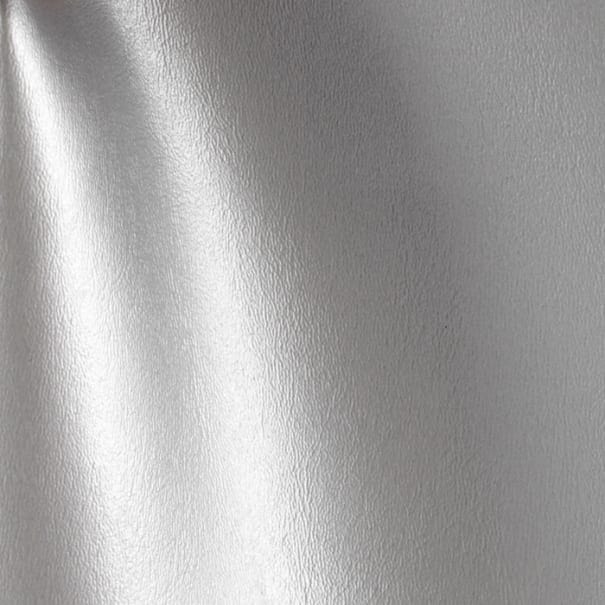Expansion joints are the metaphorical open mind we all need to change. Unexpected shifts in life can be inevitable, and it's only by allowing ourselves to be flexible that we can weather them successfully. A grossly underappreciated design consideration, expansion joints are particularly important in pool tile installations. This article will explore the necessity of expansion joints and how they can play a crucial role in maintaining your pool tile, whether it features a mosaic design or plain old solid colors.

What Is the Expansion Joint In a Pool?
An expansion joint is a gap or space where two sections of different materials in a pool meet. Installers incorporate them into projects to account for shifts in structure due to temperature changes, ground movement, spalling, and settling.
Expansion Joints in the Anatomy of a Pool Edge
Expansion joints look like narrow, shallow trenches and are typically filled with a flexible material such as caulk, foam, or rubber. You've probably seen these lines surrounding backyard pools before and thought nothing of it - maybe a style choice or an added touch of design. The top edge of a pool's wall is usually covered by coping, which is set upon leveling mortar to create a flat surface. Coping can be made of various materials such as brick, stone, or concrete.
Tile lined along the interior surface of the pool surrounds the perimeter and is set into a bed of grout. The waterline tile is set just below the coping to prevent debris from falling into the pool. Backfill or fill dirt fills in any gaps between the pool structure and the surrounding ground.
Expansion joints are found between the pool deck design and coping, which is made of materials such as concrete, brick pavers, or natural stone.
Do You Need Expansion Joints Around a Pool?
Pool tile expansion joints are important for the longevity and structural integrity of your pool. Tile can last a long time, but it is not impervious to cracking or breaking.
Expansion joints help prevent pool tiles from meeting the end of their lifespan too soon. After buying the perfect tile from this year's list of pool tile trends, that's more than enough of a reason to plan for expansion joints.
Do You Need Expansion Joints for Pavers Around a Pool?
Just like tile, pavers also need expansion joints when installed around a pool. The natural movement of the ground during changes in weather can cause pavers to shift and crack if they are not given room to expand.
Why Tile Material Is Just as Important as Expansion Joints
Expansion joints exist to mitigate the impact of thermal expansion and contraction along pool walls. This occurs naturally as a result of changing temperatures throughout the year and is more or less unavoidable.
However, the material of your pool tile can have an impact on the frequency and severity of these expansions and contractions. For example, natural stone tiles have a higher rate of expansion compared to porcelain or ceramic tiles. Porcelain tiles have several advantages, including being non-porous, which reduces their capacity to absorb water.
Glass pool tile is another strong choice when looking to avoid waterline pool tile expansion and contraction. The only thing to keep in mind when using it, however, is the potential need for cracked tile repair down the line.
Expansion joints can help reduce the stress on the tile, but choosing the right tile material is similarly crucial to prolonging the lifespan of your tile.
How to Incorporate Expansion Joins Into Your Pool
There's a learning curve to installing expansion joints - even for people who have installed backsplash tile or bathroom tile before. See step-by-step instructions on how to install pool tile expansion joints below.
1. Measure
Measure the length of the area requiring an expansion joint and cut your joint material to the appropriate size using a utility knife or scissors.
2. Apply Adhesive
Apply a layer of tile adhesive to the back of the expansion joint using a notched trowel, ensuring even coverage across the entire length.
3. Place Joint
Press the expansion joint onto the intended area. It's important to make sure the joint is straight and level with the surrounding tiles.
4. Set and Clean
Remove any excess adhesive that may have squeezed out using a finger or damp sponge before it begins to set.
5. Wait
Allow ample time for the adhesive to cure fully before filling the pool or exposing the area to water. Consult the adhesive manufacturer's instructions for specific drying times.
How Wide Should a Pool Expansion Joint Be?
When installing expansion joints in your pool tile, it's important to get the width right. Too narrow and the joint may not allow enough movement, while too wide can be unsightly and collect debris.
In general, pool tile expansion joints should be between 1/4 inch and 3/8 inch wide. This provides ample space for the tile to expand and contract without putting undue stress on the grout or tile.
Things to Remember About Pool Tile Expansion Joints
Pool tile expansion joints are far from straightforward. You'll need to keep several things in mind during the installation process, most importantly proper measurement and spacing. Expansion joints should be placed at regular intervals, typically every 8-10 feet around the perimeter of the pool.
It's also imperative to choose the right material for your expansion joints. The most common options are:
- foam
- rubber
- caulk
Each has its own benefits and drawbacks. Foam is popular for its cost-effectiveness and easiness of installation, but it can deteriorate quickly in harsh chlorine environments. Rubber's increased durability comes at an added cost. Caulk offers a long-lasting and relatively affordable solution. However, it requires precise application and may need to be replaced every few years.
Protect Your Pool With Oasis Tile
Whether you're choosing tile color options like solid-color blue tiles, green tiles, white tiles, or aqua tiles - or opting for something creative like iridescent tiles with a glass mosaic pool tile - the expansion joints around them should always be one of your first considerations.
Oasis Tile is proud to offer a broad variety of pool tiles. From Mediterranean aesthetics to unconventional designs, we have something for every decor desire. All tiles in our best-selling pool tile catalog are carefully selected to guarantee long-term value.
Feel the difference in quality for yourself by ordering pool tile samples for your swimming pool today.


























